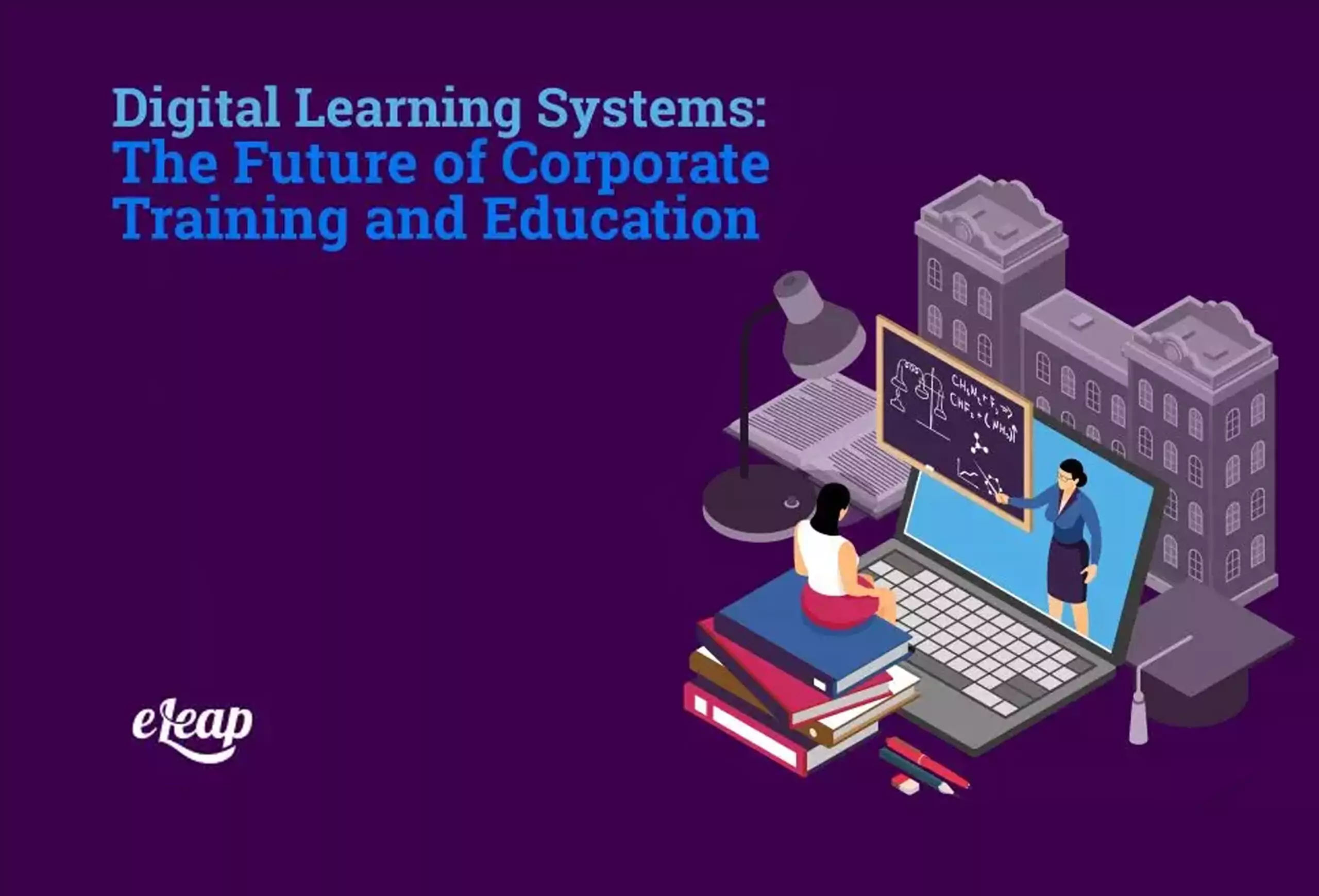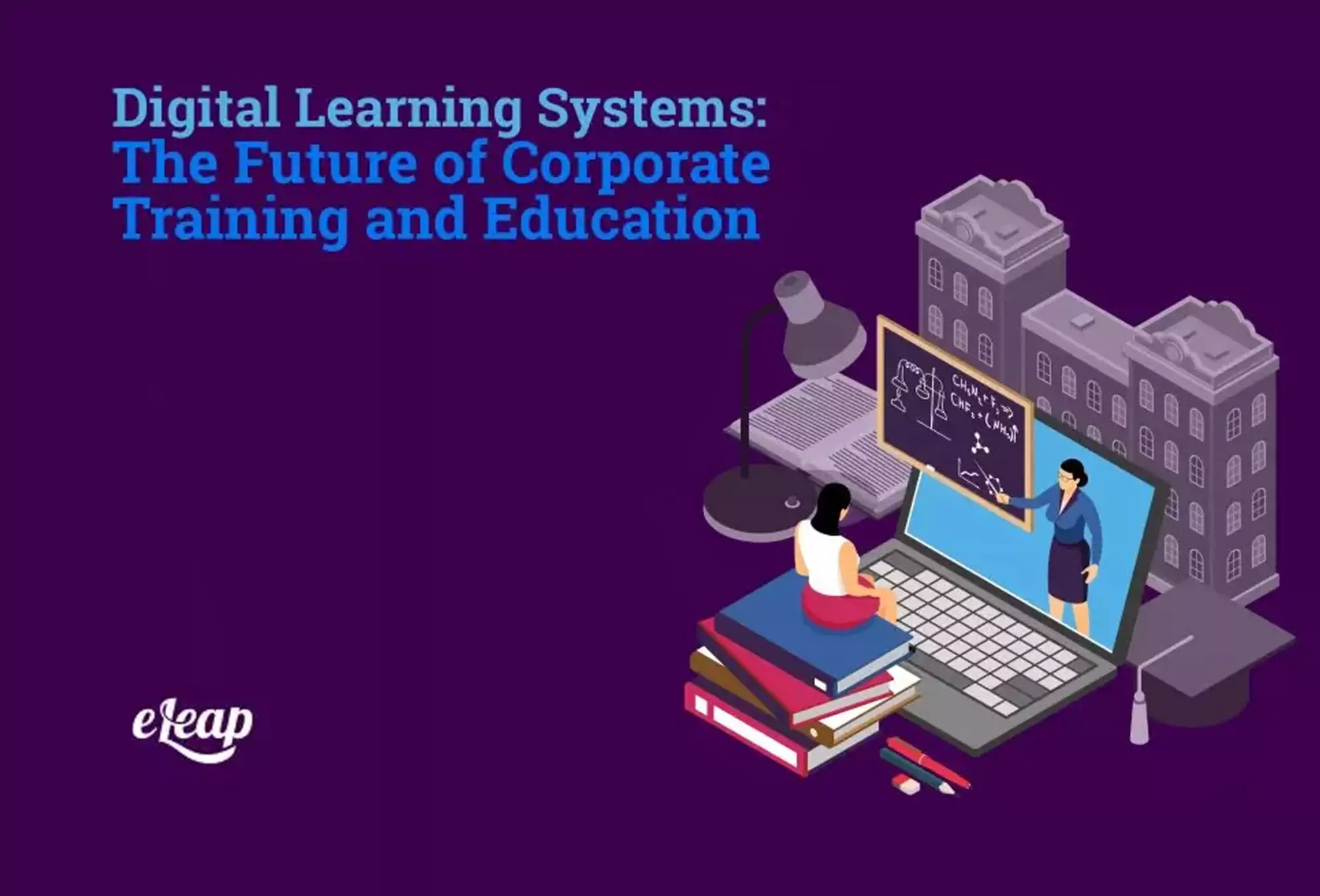Digital Learning Systems: The Future of Corporate Training and Education

Digital technology has invaded almost all areas of our professional and personal lives. It’s there on your desktop and laptop. It’s accessible from your smartphone and tablet. It’s on your TV, embedded in virtual assistants like Alexa, and even becoming more and more common in the cars we drive.
It’s also becoming common within the world of corporate training and education. Digital learning systems are the future. Why is that the case? What do digital learning systems have to offer that might be of value to organizations and learners? We’ll explore the answers to those questions and more below.

Improving the Onboarding Process
The onboarding process for most organizations is lengthy and frustrating. New employees are expected to come to grips with not just a new culture and environment, but with new ways of doing things, interacting, and even completing their job responsibilities. This does not even touch on the possibility that new hires will need to learn new skills to perform their duties. Digital learning improves the onboarding process, giving HR professionals and new hires access to an agile, flexible learning solution that can be tailored to unique needs and requirements, and that can be completed in much less time than with older types of training materials.
Do More, Whenever
One of the greatest challenges with traditional employee training and education is the frustration involved with trying to shoehorn that training in with an employee’s other responsibilities. Often, there just isn’t enough time in the day, so training gets bumped to another day. Rinse and repeat and you end up in a familiar place – too many employees are behind on their training and you’re lagging when it comes to compliance.
Digital learning systems ensure that your employees can fit their training in whenever and wherever it works best for them. They can take courses during their lunch break, while riding the train home at the end of the day, before going to sleep at night, and before coming to the office in the morning.
Flexibility and Connectivity
In the past, most training materials were printed. Books, worksheets, workbooks, and the like dominated corporate training. Then came video courses and lectures that had to be watched. The problem here is that these are not particularly flexible. With digital learning systems, users can run an eLearning module from any Internet-connected device. They can log into your system from their workstation or their laptop. The can complete tests on their tablet and study on their smartphones.
The flexibility and connectivity offered here also ensure a more holistic learning experience. For instance, a learner might complete some of their training material in the office on a Windows computer. However, their home computer might be a Mac. With a digital learning system, this is not a problem and ensures continuity from one device to another.
Improved Engagement and Information Retention
Let’s be serious for a moment. How much information did you really retain from reading your high school chemistry textbook? Probably not very much. Most people can only retain a fraction of the information they read. Most of us do better in a hands-on environment. This is another area where digital learning systems excel. They allow you to take all of your training materials and turn them into engaging, hands-on experiences that help ensure better information retention.
As an example, you can turn your entire employee handbook into an interactive video. This allows learners to engage with the content on a personal level. They interact with it, rather than simply being passive observers (reading). Here’s another example – your learners can benefit from gamification that lets them compete with other learners for a high score or another prize, but only if they retain the information presented within the game.
Easily Tailored for Mobile Users
Do your employees travel a lot? Whether it’s commuting to and from the office or for work, that travel time could be better used for completing training and education. However, traditional learning systems don’t make it easy for employees to learn while on the go. With digital technology, that’s not the case. In fact, it’s simpler than ever for your staff to learn while traveling.
Digital learning systems allow you to create content specifically for mobile devices. This allows your employees to turn what would be unproductive downtime into a learning experience. Whether they’re on the train headed home, at a conference or trade show, traveling to a remote office, or something else, they can use their smartphone or tablet to complete training material easily.
A Broad Range of Material Types
How many types of learning materials does your organization use? Chances are good it’s a pretty narrow range. With digital technology, you can easily expand that range to suit various types of learning, various learning needs, and other considerations. For instance, you can create micro-learning instances, real-time video learning, mobile experiences, games, and more, all of which foster improved outcomes for your team and, thus, for your organization.
Career Training
In addition to corporate training and compliance needs, digital learning systems can also help you invest in your employees. You can create programs that help your team members achieve new credentials and certifications, earn degrees, and otherwise build a brighter future for them. The return for your business? Significantly improved employee loyalty and longevity, which reduces churn and ensures that you’re able to retain key talent for the long term.
Conclusion
Digital learning systems offer significant benefits over other, older learning management systems (LMS). However, while they are undoubtedly the future, you don’t need to wait for some far-off date to begin benefiting from this technology. These systems are here, now, and can be implemented with surprising ease and lower costs than you might expect.
With digital learning systems, you can build a stronger organization from the ground up, invest in your employees, and ensure improved information retention and accessibility at all levels.